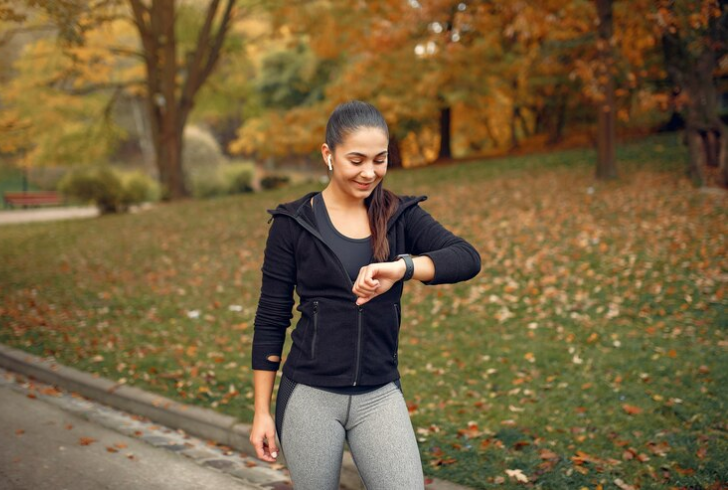Walking more every day is one of the simplest yet most effective ways to improve overall health. Just 30 minutes of brisk walking can strengthen the heart, improve bone density, reduce excess body fat, and increase muscle power and endurance. Unlike intense workouts, walking is gentle on the body, requires no special equipment, and can be done at any time of day.
For those looking to prevent or manage health issues like heart disease, diabetes, or joint pain, adding a daily walk to the routine is a great place to start. Whether it's a solo stroll, a group walk, or walking with a dog, consistent walking can enhance physical and mental well-being without demanding strenuous effort.
Health Benefits of Walking

Pexels | Yogendra Singh | Walking more helps improve your health.
Walking more offers numerous health advantages that are easy to achieve with a consistent routine. Since walking is a weight-bearing exercise, it provides the body with multiple benefits, including:
- Improved heart and lung fitness
- Lower risk of heart disease, stroke, and type 2 diabetes
- Better management of high blood pressure and cholesterol
- Stronger bones, reduced stiffness, and better joint flexibility
- Increased muscle strength and endurance
- Effective weight management and fat reduction
Walking at a brisk pace boosts energy levels and strengthens the body without straining it.
How Much Walking Is Enough?
To see noticeable health benefits, aim to walk for at least 30 minutes most days of the week. A brisk pace means the walker can talk comfortably but may find it hard to sing. Those new to walking or unable to do a full 30 minutes can break it into three shorter 10-minute walks and gradually increase the duration.
For individuals focused on weight loss, walking more frequently or extending sessions beyond 30 minutes can accelerate results. Starting small and gradually building endurance will ensure consistent progress without overwhelming the body.
Incorporating Walking More Into Daily Life
It’s easier than it sounds to fit walking into a daily schedule. Here are a few ideas to get started:
- Use the stairs instead of elevators when possible.
- Walk part of the commute—get off public transport one stop early.
- Walk to nearby shops instead of driving.
- Take regular short walks during lunch breaks or after dinner.
- Schedule walks with friends, family, or even pets for added motivation.
Building walking into everyday activities makes it a sustainable and enjoyable habit.
Make Walking a Routine
Consistency is key when it comes to walking more. By setting a specific time each day, it’s easier to turn walking into a regular habit. Some prefer early mornings for cooler weather, while others enjoy evening walks to unwind. Either way, the timing doesn’t impact the benefits—focus on what fits into the schedule.
Walking with a partner or joining a walking club can make it a social and enjoyable activity. Keeping an activity log or using a fitness tracker also helps monitor progress, ensuring steady improvement and motivation.
The Right Way to Walk
While walking more is simple, following a few tips can help prevent injury and maximize its benefits:
- Warm Up and Cool Down: Start slowly to let the body adjust, and finish with gentle stretches to avoid stiffness.
- Proper Footwear: Wear comfortable shoes with adequate heel and arch support to prevent pain or blisters.
- Pace Yourself: Walk briskly, but maintain a pace that allows for light conversation.
- Choose Safe Routes: Stick to paths with minimal traffic and hazards. Grass or walking tracks are gentler on the joints than concrete.
Increasing intensity gradually—such as walking uphill, speeding up intervals, or adding light weights—helps improve fitness levels over time.
Keeping Walks Fun and Engaging
To prevent boredom, mix up walking routines by exploring new places or adding enjoyable elements. Here are a few suggestions to keep it interesting:
- Switch up the routes regularly to enjoy fresh sights.
- Walk at different times of the day to experience varying views and temperatures.
- Visit parks or nature trails for a change of scenery.
- Walk with music, audiobooks, or podcasts for entertainment.
- Involve pets like dogs—they provide companionship and extra motivation.
Walking with friends or family members also turns exercise into a fun social activity, helping everyone stay active together.

Image by prostooleh on freepik | Tracking steps with a pedometer helps stay motivated and reach fitness goals.
Safety Tips for Walking More
While walking is a safe activity, certain precautions ensure a smooth experience:
- Wear light, breathable clothing and comfortable shoes.
- Use sunscreen, sunglasses, and hats to protect against sun exposure.
- Stay hydrated before and after walking, and carry water for longer walks.
- Check weather conditions and avoid walking in extreme heat or rain without proper gear.
- Choose well-lit areas for evening walks to stay visible and safe.
Track Progress With a Pedometer
Using a pedometer or fitness tracker can make walking more rewarding. These devices count steps, helping walkers monitor daily activity levels and set achievable goals. The recommended target for health benefits is 10,000 steps per day, but even smaller goals can build up over time.
Tracking progress encourages consistent movement and highlights improvements in endurance and overall fitness.
Walking more every day is one of the easiest and most effective ways to stay healthy. Whether the goal is to improve fitness, lose weight, or simply feel better, a daily walk can make a big difference. Start small, stay consistent, and enjoy the benefits of walking toward a healthier lifestyle.



